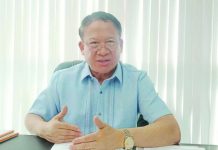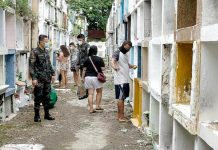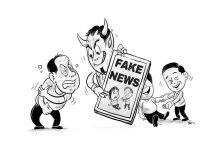
THE REVOLUTION will not be televised—because the revolution has failed. After more than half a century of communist insurgency, the current President has declared: “Finally, there are no guerrilla groups left in the country, and the government will ensure that none will be formed again.”
Really? And what about those noisy “useful idiots” at the University of the Philippines celebrating the founding anniversary of the New People’s Army (NPA), chanting “Revolution not Elections!”? Or the “white operatives” of the Makabayan bloc in Congress? Should we dismiss them as nothing more than shrill background noise?
Backing up the President’s statement, officials of the National Task Force to End Local Communist Armed Conflict (NTF-ELCAC) and the Philippine Army confirmed during a press briefing that indeed, no guerrilla fronts remain in the country.
At a press conference organized by the NTF-ELCAC Media Bureau, officials announced that all 89 NPA guerrilla fronts have been dismantled—marking a historic breakthrough in the nation’s decades-long fight against communist insurgency.
According to Philippine Army spokesperson Col. Louie Dema-Ala, these guerrilla fronts once functioned as self-sustaining politico-military units, capable of launching tactical offensives and building underground mass support. But by the end of 2024, the last remaining front—Komite Larangang Guerrilla 1 in the Bicol Region—was finally neutralized.
The declaration rests on five indicators:
1. Neutralization or withdrawal of NPA armed units
2. Collapse of political-military infrastructure
3. Loss of mass base support
4. Denial of access to guerrilla zones
5. Full reentry of government services into affected communities
“With the disintegration of these five elements, the NPA has lost its operational capability. What remains are small groups—typically fewer than 10 men—who now operate without direction, support, or territory. We now treat them as bandits, not insurgents,” Col. Dema-Ala emphasized.
NTF-ELCAC director Alexander Umpar, however, stressed that this success is not purely military. “This was made possible by a whole-of-nation approach under Executive Order No. 70. We combined combat operations with social interventions—livelihood, infrastructure, peace dialogues, and reintegration.”
The Barangay Development Program (BDP) and localized peace initiatives became key drivers of community resilience, encouraging rebel surrenders and breaking the insurgency’s hold on villages. Simply put, government presence was finally felt in areas long neglected—where people once felt abandoned, the state showed up.
Another critical factor was cutting off financial support from international solidarity networks, which had long fueled radical narratives and supplied material aid to NPA remnants. This underscores that government must continue to counter not only armed rebellion but also ideological subversion and foreign manipulation.
Finally, the Philippine Army spokesman issued this appeal: “The President has spoken, and we, in the Army, echo his call: It is time to end the fight. Lay down your arms. The nation is ready to embrace peace. The revolution has failed. Let us rebuild together.”
Indeed, the revolution will not be televised—because the revolution has failed./PN







